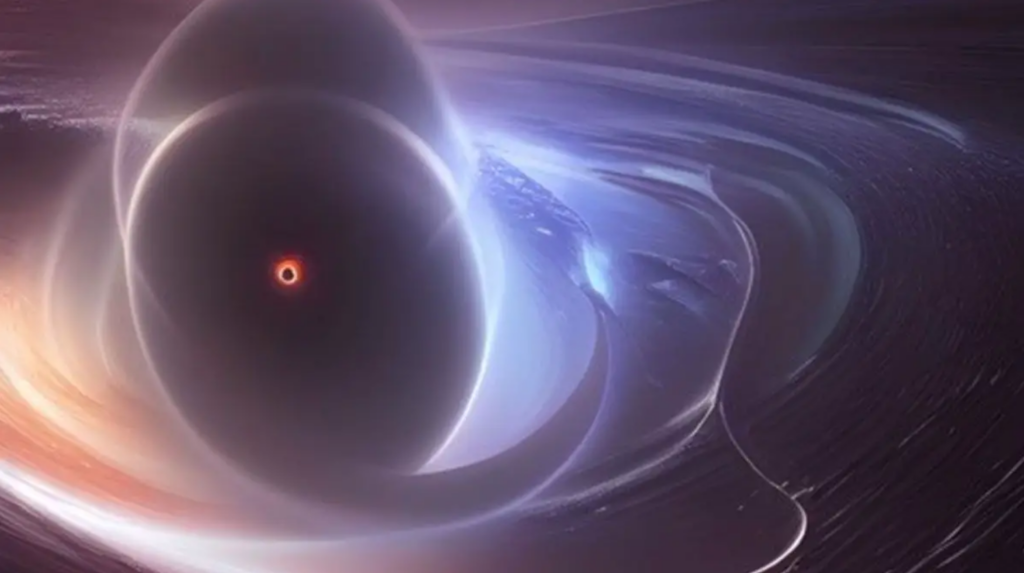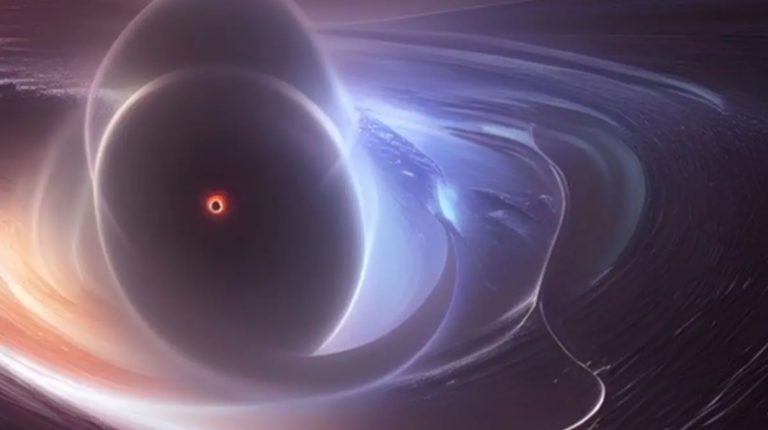Was the creation of our universe a result of the quantum chaos within a black hole originating from another universe?
Black holes are well-known and terrifying occurrences—regions distinguished by infinite gravitational force, making escape impossible. The formation of a black hole is quite simple: it involves compressing a sufficient amount of mass below a specific size threshold. Once this threshold is exceeded, gravity triumphs over all other forces, leading to the birth of a black hole.

The crucial threshold varies depending on the amount of mass being compacted. For an average human, this threshold is equivalent to the size of an atomic nucleus. In contrast, compressing the entire Earth into the volume of a chickpea would result in a black hole of similar size. Similarly, for a typical star with several times the mass of the Sun, the resulting black hole would be a few miles wide—a dimension comparable to an average city.
Interestingly, combining all the matter in the universe in an effort to create the largest possible black hole would produce a black hole approximately the size of the universe itself.
The Universe Shares Characteristics With Black Holes
The universe and black holes share two significant similarities that have been unexpectedly revealed. One of the most notable characteristics of a black hole is its surface, known as the event horizon. This marks the point of no return, where the gravitational pull is incredibly strong, making it impossible to escape by surpassing the speed of light. Consequently, any object or entity that enters the event horizon becomes trapped within the black hole.
Likewise, our universe possesses its own event horizon, referred to as the cosmological event horizon. However, it is located at a considerable distance and is a result of the universe’s expansion. As each day passes, the universe continues to expand, causing galaxies that are farther away to recede at speeds exceeding those of closer galaxies. Once a certain distance, approximately 14 billion light-years, is reached, galaxies appear to move away from us at speeds faster than that of light. This expansion creates a barrier that cannot be crossed, similar to being confined outside the boundaries of the universe, resembling the predicament of being trapped within a black hole.
The second similarity shared by black holes and the universe is the existence of a singularity. This singularity represents a point of infinite density where gravity has squeezed all matter into an infinitely small space. The true nature of singularities remains mysterious, requiring a quantum explanation of gravity for clarification—a challenge that has not yet been met.
Black holes contain a singularity at their center, containing all the matter that led to their creation. Similarly, our universe contains a singularity— the Big Bang. Around 13 billion years ago, all the matter in the universe was compressed into a tiny point from which expansion began, leading to the formation of particles, stars, and eventually, life.
But the Discrepancies Are Significant
Our universe differs significantly from the black hole paradigm due to the nature of singularities, despite some similarities. Unlike black hole singularities, which have a specific spatial location, the singularity of the Big Bang exists temporally. The cosmological singularity is not a physical entity within the universe but rather a point in the universe’s past, forever beyond our grasp. This difference has profound implications in gravitational mathematics, highlighting the fundamental dissimilarity between the singularities of the Big Bang and black holes. Therefore, the idea of our universe being inside a massive black hole is not feasible, given the disparity in the characteristics of these singularities.
However, an Intriguing Connection Persists
The presence of the singularity at the Big Bang, despite the disparities, may hold significant implications. The true nature of black hole singularities remains a mystery, as current gravitational theories impose limitations. There is speculation about black hole singularities potentially showcasing complex quantum phenomena and gravitational instabilities beyond ultra-compressed matter.
These instabilities could lead to the creation of isolated “bubbles” branching off from the parent universe, each forming a self-contained universe with unique properties and evolution. This hypothesis suggests a scenario where our universe originates from the quantum chaos within a black hole of another universe—a concept rich in hypothetical possibilities, though rooted in uncertain physics.
While speculative, this idea highlights the boundaries of our knowledge concerning singularities, encouraging reflection and further investigation into the enigmatic realms of cosmology and quantum mechanics.
Do not forget to share your opinion with us to provide you with the best posts !




0 Comments